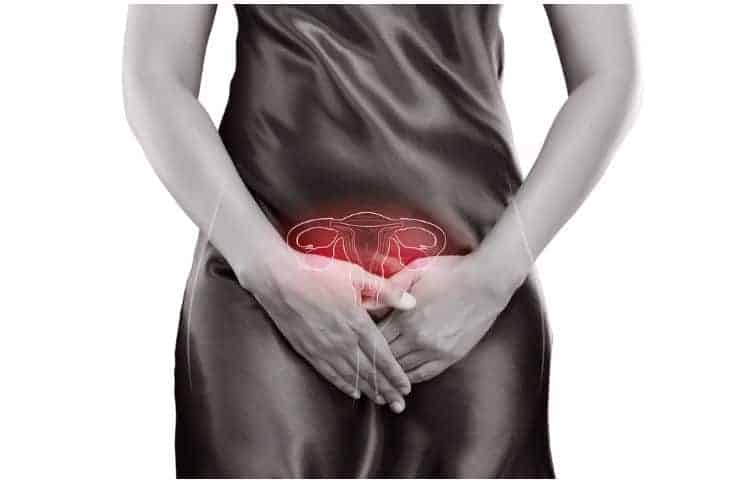Vestibular Papillomatosis vs HPV – Differences, Symptoms, Causes, Prevention:
Vestibular Papillomatosis
It is a skin condition that forms on the vulva of a woman. This condition is described by small pink bumps or papules.
VP is the female equivalent to hirsuties coronae glandis (small protuberances which may occur on the ridge of the glans of the human penis) and is usually believed to be human papillomavirus; however, a few studies have disproved this.
This genital condition is not infectious, nor is it an illness. VP is not sexually transmitted and is not viral. Also, VP is commonly mistaken for warts, however, there is no association between the two.
Causes
Scientists aren’t 100 percent sure what is the cause of VP, nevertheless, some think that it is caused by a blocked gland in the skin, called a sebaceous gland. Another possible cause of this condition may be HPV; however, it is yet to be proven.
Moreover, there are a few doctors who think that VP is just an anatomical variant of people’s genitals which aren’t harmful, but they’re just kind of like a skin tag.
Note
A female with this genital condition may be recommended by a dermatologist for the treatment of genital warts. However, it is vital that dermatologists be familiar with this genital condition in order to avoid needless treatment.
Symptoms
The majority of the patients have no symptoms. Nevertheless, some report stinging, itching, pain, and burning where the growths occur, and the symptoms are usually misdiagnosed as a yeast infection.
HPV (Human Papillomavirus)
It is comprised of about 100-150 viral strands, with more than 40 affecting the human genitals. HPV 16 accounts for almost fifty percent of all cervical cancers. It is so common that most of all sexually active people get it at some point during their lives.
For instance, according to the statistics, in the United States, nearly 80 percent of people will be infected with the virus at some point in their lives, with about 14 million newly diagnosed cases of this condition every year.
Persistent human papillomavirus infection is linked with an increased risk of genital warts (soft growths that occur on the genitals) and cervical cancer (a type of cancer that is arising from the cervix).
Symptoms
Many sufferers don’t have any signs and symptoms, and this condition usually goes away on its own. However, it is still important to consider STD testing for HPV and maintain regular check-ups with a healthcare professional. STD testing in Los Angeles helps to detect sexually transmitted diseases and identify the type and category of the condition.
This condition falls into two main categories:
- High-risk – that may lead to cancer. However, cancers caused by this condition commonly take many years to develop. Moreover, it is essential to comprehend that a positive test for this virus doesn’t necessarily mean a 100 percent chance you will get cervical cancer.
- Low-risk (mainly types 6 and 11) – it is the type that does not cause cancer, but it can cause skin warts (raised bumps on your skin) on or around the anus and genitals. Interestingly, these warts can show up months or even years after you have sex (anal, vaginal, or oral) with an individual who is infected with this virus.
Causes
It is transmitted through anal, vaginal, or oral sex with someone who has this virus. In rare cases, a mother who has this condition can transmit it to her baby during delivery.
Risk factors for multiple infections with this virus include – tobacco use, immune system suppression (HIV-infected people are at higher risk of infection with this virus), early first sexual intercourse, or multiple sexual partners.
Treatment
In most patients, the immune system removes this virus from the body (approximately 90 percent clear within 2 years) and has no long-lasting adverse effects.
Bottom Line – Vestibular Papillomatosis vs HPV
These conditions may look similar, however, HPV is actually a health problem that can lead (rarely) to life-threatening conditions (like cancer).
Prevention
Using a Condom
Condoms provide some protection against human papillomavirus. Nevertheless, condoms do not prevent this infection 100%. More importantly, men who use ”rubbers” are less likely to pass it on to their female partners as well as are less likely to be infected with this virus.
Limit Your Number Of Sexual Partners
The more sexual partners you have, the more chances of exposure you have to the virus.
Another good prevention strategy is to be monogamous while you are in a sexual relationship. Also, another simple method of prevention is to delay your sexual activity.
Avoid Birth Control Pills
Research has concluded that the birth control pill can actually increase your likelihood of turning this condition into cervical cancer.
Don’t Smoke Tobacco
Try to avoid secondhand smoke when possible and quit smoking tobacco if you smoke, since smoking weakens your immune system. Additionally, there is a strong connection between smoking and cervical cancer, according to Women to Women.
Eat Foods Rich In Folate
Folate, also known as vitamin B9 – different from folic acid (the synthetic version), is one of many essential vitamins. According to a recent study, high vitamin B9 blood levels are linked to the prevention of high-risk HPV 16 and mild cervical dysplasia.
However, there is no evidence that supplementation with folic acid provides the same anti-cancer benefits. More importantly, a few studies have established an increased risk of cancer progression with high doses of folic acid supplementation.
Foods high in folate include – asparagus, red kidney beans, broccoli, lentils, okra, brussels sprouts, green peas, chickpeas, avocado, spinach, beets, oranges, guava, papaya, mango, banana, pomegranate, lettuce, cauliflower, cabbage, turnip greens, and mung beans.
READ THIS NEXT
Koilonychia (Spoon Nails) – Symptoms
Bacterial Vaginosis vs Yeast Infection
Miconazole vs Tioconazole – Which Is Better?
Splenic Flexure Syndrome – Symptoms
References https://www.ncbi.nlm.nih.gov/pubmed/8217979 http://www.jaad.org/article/S0190-9622(08)01073-6/pdf http://www.nejm.org/doi/full/10.1056/NEJMicm076056
